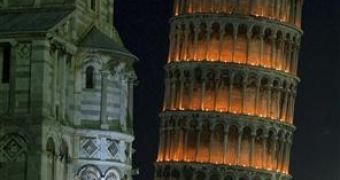Along with the Colosseum in Rome, the leaning tower of Pisa is one of Italy's most recognizable symbols. It was built between 1174 and 1370 in an area with unstable ground, which has been steadily giving way under the 14,000 ton structure causing it to tilt from the original vertical position. In the 1990s, the tower was declared unsafe for visitors and was closed for a twelve year consolidation project having as purpose stabilizing the ground below the tower and slightly reducing its tilt.
When the project ended in 2001, the tilt of the tower was corrected by 40 centimeters. According to Professor Michele Jamiolkowski, the tower of Pisa is safe for at least 300 years before requiring additional stabilization. "All of our expectations have been confirmed. Now we can say that the tower can rest easy for at least 300 years", said Professor Michele Jamiolkowski in an interview published in Italy's Corriere della Sera.
In the 1990s, the tower was sinking at a rate of about one millimeter per year. The tilt became obvious to the builders only after they had completed several stories and they tried to compensate it by using trapezoidal stone. However, the tower continued to lean away from its normal vertical position. During the consolidation process, engineers used cables to anchor the structure as cement was pumped in the ground below it.
After the process was complete, the tower had the same tilt as in the 1700s. It is now going through a restoration process destined to clean the marble used to build it.
The Pisa tower will probably continue to lean as time passes, albeit the Italian officials say that they never considered straightening the tower, since it is a unique symbol and attraction point for tourists. It is said that Galileo himself used it to make experiments on Earth's gravity, regardless of Vatican's view on the matter of Earth revolving around the Sun, and not the other way around.

 14 DAY TRIAL //
14 DAY TRIAL //